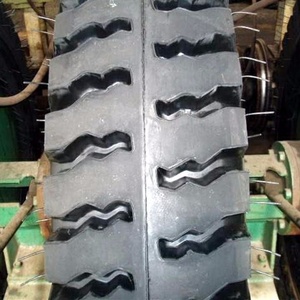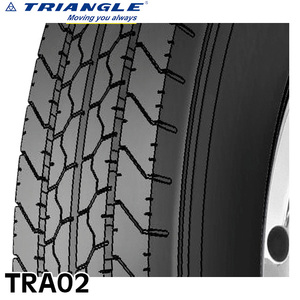(1845 products available)
























































































































































































7.50 15 tires are an uncommon size for 15-inch wheels. They are mostly found on light trucks, trailers, and some agricultural equipment. These tires are available in several types, including:
7.50-15 Load Range G Tires
These tires have a rear axle maximum load capacity of 8,800 lbs. and a dual maximum load capacity of 10,080 lbs. They are primarily used for commercial trucks and heavy-duty applications. The 7.50-15 G tires offer superior stability, strength, and durability, even when used in high-speed and high-load conditions. They are designed with a stiff sidewall and a tread pattern that enhances traction and braking performance.
7.50-15 Load Range F Tires
These tires have a single maximum load capacity of 6,600 lbs. and a dual maximum load capacity of 7,560 lbs. They are often used in light trucks and trailers. The 7.50-15 F tires are designed to provide stability and load-carrying capacity, making them suitable for transporting goods and equipment. The tread and sidewall design of these tires provide a good grip and traction on different road conditions.
7.50-15 Load Range E Tires
These tires have a single maximum load capacity of 5,070 lbs. and a dual maximum load capacity of 5,840 lbs. They are used on light trucks, trailers, and some agricultural equipment. The 7.50-15 E tires are designed to provide a balance between comfort, fuel efficiency, and load-carrying capacity. They are suitable for highway use and long-distance transportation. The tread design of these tires reduces rolling resistance, improving fuel efficiency.
7.50-15 Load Range D Tires
These tires have a single maximum load capacity of 4,080 lbs. and a dual maximum load capacity of 4,900 lbs. They are commonly used for trailers and agricultural equipment. The 7.50-15 D tires are designed with a robust construction and a deep tread pattern to improve traction and durability. They are suitable for off-road applications and can transport heavy equipment and goods.
Check the tire pressure
Use a pressure gauge to check the tires. The recommended pressure is stated on the driver's side door and the tire's sidewall. If the pressure is too low or too high, adjust it according to the standards. Too low pressure can cause tire wear and too high pressure can cause a blowout. Check the pressure at least once a month. The tire pressure must be checked when the tires are cold, preferably before a trip.
Tread depth inspection
7.50-15 tires must be checked for tread depth. The tread depth affects tire traction, rolling resistance, and hydroplaning. The minimum tread depth in Canada is 1.5 mm. A tread depth gauge can measure the depth. Place the gauge in the center of the tread and read the depth. The tire must be replaced if the depth is below the minimum. The tire must also be replaced if there is uneven wear or damage to the tread. Uneven wear or damage reduces traction and increases rolling resistance.
Visual inspection
The tires must be inspected for cracks, bulges, punctures, cuts, or stones. These defects can cause tire failure, reduce traction, or increase rolling resistance. If a defect is found, the tire must be replaced. A visual inspection should be performed at least once a week before driving.
Rotation of tires
7.50-15 tires should be rotated every 10,000 km or every second oil change. Rotating the tires promotes even wear and extends their life. The tires have to be removed from the vehicle and installed in a different position. The right front tire must be moved to the right rear axle, the right rear tire must be moved to the right front axle, and the same must be done on the left side.
Alignment and balancing
The tire's alignment and balancing must be checked at every oil change or every 20,000 km. Improper alignment and balancing cause uneven tire wear and vibrations, reducing comfort. To check the alignment, the vehicle must be placed on a level surface, and a mechanic must be used to check whether all four wheels point in the same direction. To check the balancing, the tire must be installed on a special machine that rotates it at high speed. If the machine shows that the tire is out of balance, weights must be added to balance it. If the machine shows that the tire is in balance, no weights need to be added.
Tire storage
When tires are not in use, they must be stored in a cool, dry place away from direct sunlight, heat sources, and chemicals. This helps to prevent damage and extends their life. Before storing, clean the tires and remove any dirt or debris. When retrieving, inspect the tires before installing them on the vehicle.
Choosing the right 7.50-15 tire for a vehicle can be a daunting task, but it doesn't have to be. By understanding the basics of tire selection and considering the important factors, it can be made easier. Here are some tips that will help select the perfect tires:
Understand driving needs:
Firstly, understand the driving needs: consider the weather conditions in the area, the type of road mostly driven on, and the driving style. All these will help determine the type of tire suitable for the needs.
Know the vehicle requirements:
Additionally, knowing the vehicle requirements is also important: check the vehicle manual to find the recommended tire size, load index, and speed rating. Ensure that the new tires meet the vehicle requirements for optimal performance and safety.
Consider brand and quality:
Moreover, consider the brand and quality: go for well-known tire brands that offer quality and durability. Quality tires might be more expensive, but they will save money in the long run because of their better performance and longer lifespan.
Check the tread pattern:
Furthermore, check the tread pattern: the tread pattern affects the tire's performance on different surfaces. A symmetrical tread pattern offers even wear and a stable performance, while an aggressive tread pattern provides better traction on off-road surfaces.
Evaluate the rubber compound:
Besides, evaluate the rubber compound: the rubber compound affects the tire's grip and durability. Tires with softer rubber compounds offer better grip on the road, while those with harder rubber compounds last longer.
Changing a 7.50R15 tire is a straightforward process that can be done with basic mechanical skills. All the necessary tools should be at hand, including a jack, jack stands, wheel chocks, lug wrench, torque wrench, ratchet socket, and a new 7.50 15 tire. The following are some basic steps to take when replacing 7.50 15 tires:
Prepare the Vehicle
To begin, park the vehicle on a level surface. The parking brake is also engaged, and wheel chocks are placed behind the wheels that won't be changed to prevent the car from rolling. Then, the hubcap or wheel cover is removed to reveal the lug nuts.
Loosen the Lug Nuts
The lug nuts holding the tire in place are slightly loosened using a lug wrench. They are not completely removed at this stage.
Jack Up the Vehicle
The manufacturer's jacking point is used to securely attach the jack under the vehicle. The jack is then pumped to raise the car until the tire to be replaced is slightly above the ground. After that, the jack stands are placed under the vehicle for added safety and support.
Remove the Old Tire
The lug nuts are fully removed using the lug wrench and the tire is pulled off the wheel hub. A ratchet and socket are used to remove the valve stem nut and flange nut, which allows the dismounting of the tire from the wheel. The new tire is then mounted onto the wheel, and the flange nut and valve stem nut are tightened.
Mount the New Tire
The new 7.50 15 tires are placed onto the wheel hub, and the lug nuts are hand-tightened. The nuts are tightened in a crisscross pattern to ensure even pressure. This is done after the vehicle has been lowered off the jack stands and onto the ground.
Lower the Vehicle and Final Checks
Once the new tire has been fitted, and the lug nuts have been securely fastened, the vehicle is lowered from the jack. A torque wrench is used to tighten the lug nuts to the manufacturer's specified torque. The hubcap or wheel cover is replaced, and all tools are removed from the vehicle.
Q1: What kinds of vehicles use 7.50 15 tires?
A1: The 7.50 15 tires are mostly used on light trucks and commercial vehicles that require dependable performance and durability in various road conditions.
Q2: Are 7.50 15 tires radial tires?
A2: Yes, 7.50 15 tires can be radial tires. The radial ply configuration, which is the most common and contemporary tire construction method, offers better stability, grip, and durability compared to other ply configurations.
Q3: Can 7.50 15 tires be used off-road?
A3: Yes, 7.50 15 tires can be used off-road. Nevertheless, it is crucial to select tires with appropriate tread patterns and compounds for specific off-road environments, such as mud, sand, or rocky terrain.
Q4: How long do 7.50 15 tires last?
A4: The longevity of 7.50 15 tires depends on several factors, such as driving habits, road conditions, and tire maintenance. On average, these tires can last between 40,000 and 60,000 miles. Nonetheless, proper tire maintenance, such as regular inflation checks, rotation, and alignment, can improve their durability.